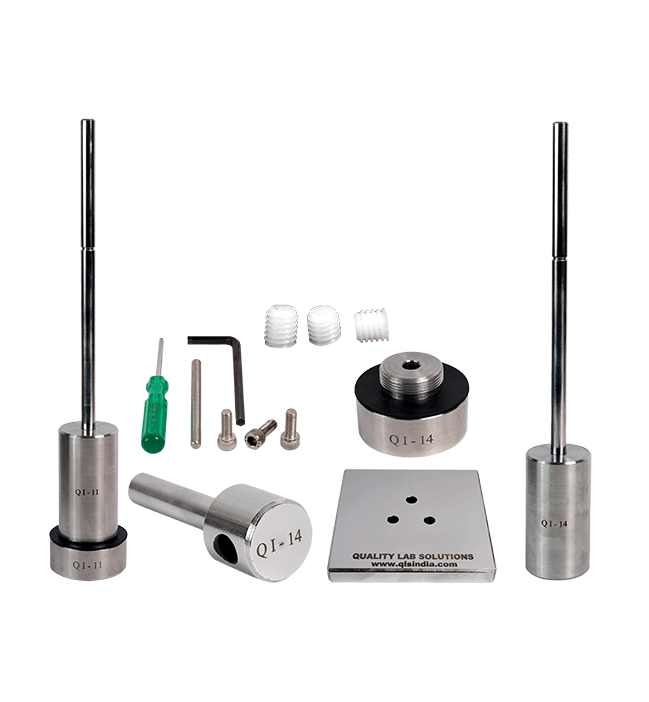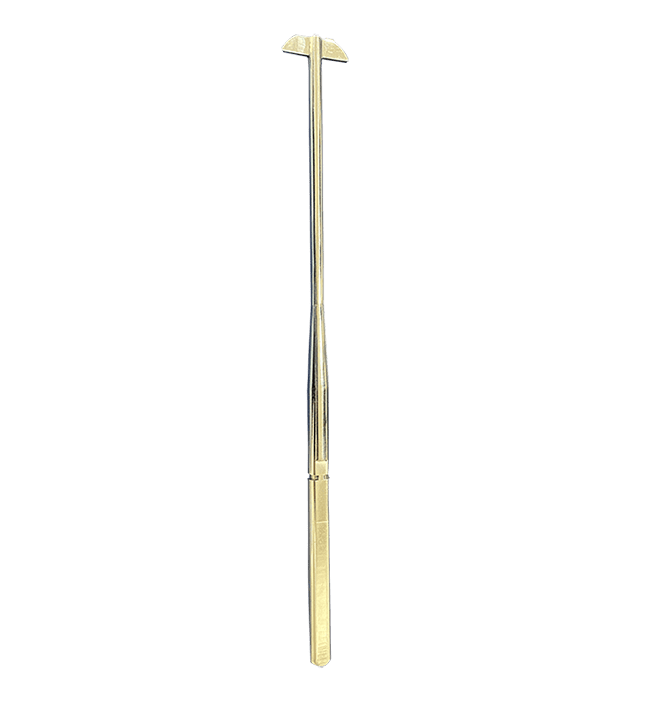Analysis Instrument provides a full portfolio of dissolution accessories to measure the release rate of an active pharmaceutical ingredient (API) from a dosage form, including tablets, capsules, semisolids, transdermal patches, microspheres, and implants. Our dissolution accessories range from standard system components such as shafts, paddles, baskets, cannula filters, and vessels to more specialized accessories such as intrinsic dissolution.
It is essential to choose compliant dissolution accessories to ensure reproducibility and consistency from test to test. We also offer some dissolution tester parts for non-compendial dissolution apparatus with additional configurations to provide drug release information for the API and topical formulations.
Dissolution Filters
Dissolution filters are a type of dissolution filters that fit on the end of dissolution and provide filtration when sampling occurs. Analysis Instrument Full Flow Filters, where the whole construction of the dissolution filter is made from filter material, offer an increased surface area for filtration. The large surface area greatly increases the filtration capacity and prevents clogging.
Analysis Instrument Full Flow Filters are made of either ultrahigh molecular weight polyethylene (UHMWPE) or the polyvinylidene fluoride (PVDF). These dissolution Dissolution filters are relatively inert and can be used for different sample matrices. PVDF Dissolution filters are available in those instances where chemical compatibility or sample adsorption is an issue with UHMWPE. These are made of a low protein-binding material that can filter a wide variety of active drug substances. Both UHMWPE and PVDF Dissolution filters can be used with dissolution and are available in packs of 100 or 1000.
Features :
- Dissolution filter useable with 1/8 inch diameter cannulas
- vailable in 1µm, 4µm, 10µm, 35µm or 70µm pore sizes
- Full Flow filters available in packs of 100 or 1000
- Dissolution cannula filters are color-coded for easy identification
- Certificates of analysis can be provided on request


Dissolution Baskets
Dissolution baskets are cylindrical baskets that contain dosage forms and are placed at the end of the rotating shafts for dissolution apparatus 1 or reciprocating apparatus 7 holders. Analysis Instrument Dissolution Baskets offers dissolution apparatus baskets that are constructed from non-reactive mesh to ensure accuracy of testing results. From the standard USP stainless steel 40-mesh basket, to dissolution baskets with varying mesh sizes (e.g. 20-mesh baskets, 10- mesh baskets), to baskets specific to small or large dosage forms, Analysis Instrument supports your needs. Inert PTFE or gold coatings for dissolution baskets are available to avoid API adsorption on stainless steel surfaces.
Unless otherwise noted, all of our dissolution baskets fit the standard basket shafts to perform dissolution apparatus basket tests.
Features :
- Analysis Instrument baskets in USP 40-mesh, 20-mesh or varying mesh sizes
- Available in Stainless steel, PEEK, Titanium, Gold-coated or PTFE coated
- Baskets for small, standard and large dosages forms
- Certificate of Conformity and serialization available for selected dissolution baskets
- Specialty baskets available, e.g. metformin and felodipine dissolution apparatus basket methods
- Baskets available for reciprocating for 400-DS and Apparatus 7 holders





Dissolution Sinkers
Capsule wire, weights, and sinker baskets are used to retain a solid dosage form at the bottom of the vessel for testing when the dosage form is buoyant. Depending on your dosage form, a variety of options are available.
Features :
- Capsule wire, weights, and sinker baskets are used to retain a dosage form at the bottom of the vessel for testing when the dosage form is buoyant
- A variety of options are available
- The flexible capsule wire meets USP requirements and has a 0.032 in. diameter
- Sinker baskets are offered in a variety of mesh sizes and made of stainless steel with press-on caps, using O-rings to seal the basket
- Japanese Pharmacopoeia (JP) sinker baskets are available as an alternative
- Three-prong capsule weights fit traditional capsule sizes one through three, and are sold individually








Dissolution Vessels
Dissolution vessels are used to hold dissolution media during drug release.
Analysis Instrument provides a variety of dissolution vessels for use with Analysis Instrument dissolution apparatus. Selected verified vessels are available containing a Certificate of Conformance (COC).
Vessels for the 708-DS are serialized and have a collar incorporated on the vessel to maintain accurate centering, reproducible vessel orientation, and verticality alignment. Center and Ease vessels are available for legacy Agilent 705-DS, VK7000/10 and V-series dissolution apparatus.
Beside clear glass standard vessels, low actinic red vessels (similar to amber vessels) are offered to protect light sensitive dosage forms. Dissolution peak vessels (Apex vessels) are available to avoid coning in dissolution.
Molded vessels are vacuum formed (VF) and offer the tightest precision available to reduce position-to-position variability and improve uniformity. Unlike standard vessels that can be inconsistent in cylindricity, roundness, and concentricity, the molded VF vessels meet stringent specifications and allow you to focus on testing your dosage form rather than worry about your vessel parameters.
Features
- Vessel volume sizes include 100/200 mL, 250mL and 1 and 2 L sizes
- Hemispherical and flat bottom (enhancer cell) shaped dissolution vessels available
- Low actinic-red (similar to amber) vessels to protect light sensitive dosage forms
- Apex (peak vessels) to avoid coning effects during Dissolution tests
- Verified versions are available for select volumes to support conformance guidelines for prednisone verification tests (PVT) and mechanical qualification
- Conversion kits are available to support small- and large-volume dissolution testing





Intrinsic Dissolution Kits
Intrinsic Dissolution Kits enables testing of the intrinsic dissolution rate of active pharmaceutical ingredients. The intrinsic dissolution rate of the active pharmaceutical ingredients is measured to depict the dissolution rate of a drug and determine its batch to batch chemical equivalence.
The intrinsic dissolution rate is the rate of dissolution of pure pharmaceutical ingredients when conditions such as surface area, agitation or stirring speed, pH and ionic strength of the dissolution medium are held constant. The determination of this parameter allows labs to screen experimental drug formulations and to understand their behavior under different bio-physical conditions.
Kit Features:
- Easy to Use
- Use with any dissolution test system
- Prevents air bubble accumulation
- Eliminates Shaft and Die Wobble associated with Wood Apparatus
- Reduces potential for vessel breakage
- Eliminates “heat sink” effect



Dissolution Paddles
In paddle dissolution method, dissolution paddles are attached vertically at the end of a rotating shaft to release the active pharmaceutical ingredient from the dosage form inside the holding vessel. Analysis Instrument dissolution rotating paddles are compatible with both apparatus 2 and apparatus 5 methods.
Analysis Instrument apparatus 2 paddles are available in a variety of inert materials for different sample matrices, including stainless steel, DLC-coated, PTFE-coated, and PEEK. The 2-piece spin on/off shaft design in combination with a fixed installed upper receptor shaft, enables fast and easy interchange between dissolution paddles and basket shafts. It further eliminates long lasting shaft length verification process. Different shaft lengths and paddle sizes are offered to provide solutions for vessel volumes of 100/200 mL, 250 mL, 1L and 2L. Paddles for the 708-DS instrument and legacy instrumentation are available.
All USP apparatus 2 & 5 paddles are serialized and designed to meet USP specifications including an individual as standard.
Features :
- Select from electropolished stainless steel, or a variety of chemically inert paddles in a range of sizes
- New Diamond-like carbon (DLC) – coated paddles with unique surface properties in terms of chemically inertness, robustness and durability
- Additionally, mini paddles for small-volume dissolution testing and Chinese Pharmacopeia methods are available



Validation Kit Tools
There are many statistical tools that can be used as part of validation. Control charts, capability studies, designed experiments, tolerance analysis, robust design methods, failure modes and effects analysis, sampling plans, and mistake proofing are but a few.
Tool validation is described in several levels, as follows Developing a draft tool (this encompasses criteria to be used in evaluating medical education websites). Pilot testing of the tool. Revising the tool according to pilot tests. Validating the tool. Validation requires documented evidence that a process consistently conforms to requirements. It requires that you first obtain a process that can consistently conform to requirements and then that you run studies demonstrating that this is the case. Statistical tools can aid in both tasks.



